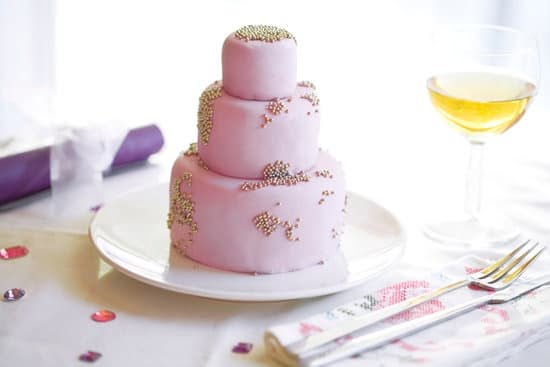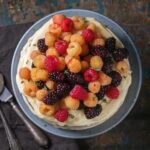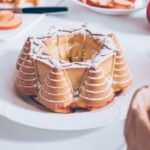Cake mold decoration plays a crucial role in enhancing the overall presentation of baked goods and setting the tone for special occasions and celebrations. Decorating a cake mold allows bakers to unleash their creativity, turning a simple cake into a work of art that not only tastes delicious but also looks visually stunning.
In this article, we will explore the significance of cake mold decoration and provide tips and techniques to help you create beautifully decorated cakes that are sure to impress.
When it comes to cake mold decoration, choosing the right cake mold is essential. Today, there is a wide variety of cake molds available in the market, each offering unique designs and shapes. We will discuss how to select the perfect cake mold for your desired decorating techniques, taking into consideration the occasion and theme. The type of mold you choose can greatly impact the final presentation of your cake.
Before diving into the decorating process, it is important to properly prepare your cake mold. Cleaning and greasing the mold are crucial steps in ensuring easy release once your cake is baked. We will provide step-by-step instructions on how to clean and prepare your cake mold for decorating, as well as tips on greasing and flouring techniques. Additionally, certain types of molds may require special steps for preparation, which we will cover in detail.
Choosing the Right Cake Mold for Decoration
When it comes to cake mold decoration, choosing the right mold is crucial in achieving the desired results. There are various types of cake molds available in the market, each with its own unique characteristics and design elements. In this section, we will explore the different options and provide tips on how to select the perfect cake mold for your decorating techniques.
Firstly, consider the occasion and theme when choosing a cake mold. For example, if you are making a birthday cake for a child, you may want to choose a mold that represents their favorite cartoon character or animal. Alternatively, for a wedding or anniversary celebration, you may opt for an elegant and intricate design that complements the overall theme.
Next, take into account your preferred decorating techniques. Different cake molds have different designs and shapes that can enhance specific decorating styles. For example, if you enjoy piping intricate designs or creating detailed fondant sculptures on your cakes, choose a cake mold with smooth edges and minimal surface details. On the other hand, if you prefer working with icing and creating textured finishes, opt for a cake mold with interesting patterns or ridges.
| Type of Cake Mold | Description |
|---|---|
| Round Cake Mold | A classic shape suitable for various occasions |
| Square Cake Mold | A versatile shape often used for tiered cakes or special events |
| Bundt Cake Mold | A ring-shaped mold perfect for adding decorative glazes or fillings |
| Character Cake Mold | Molds shaped like popular characters or objects, ideal for themed parties or children’s cakes |
| Specialty Cake Mold | Unique molds with intricate designs, such as floral patterns or geometric shapes |
By considering the occasion, theme, and your preferred decorating techniques, you can select a cake mold that will allow you to create stunning and visually appealing decorations. Remember to have fun with your choice and let your creativity shine through in every cake you decorate.
Preparing the Cake Mold for Decoration
Before diving into the exciting world of cake mold decoration, it is essential to properly prepare the cake mold to ensure a flawless result. Taking the time to clean and prepare the cake mold will not only help with easy cake release but will also contribute to a beautiful overall presentation. Here are some step-by-step instructions on how to prepare your cake mold for decoration:
- Clean the Cake Mold: Start by thoroughly washing and drying the cake mold. This will remove any dust or residue that could affect the appearance of your decorations. Use warm soapy water and a soft sponge or cloth to gently clean both the inside and outside of the mold.
- Grease and Flour: To prevent your baked cake from sticking to the mold, it is crucial to grease and flour it properly. Apply a thin layer of vegetable shortening or butter on all surfaces of the mold, ensuring complete coverage. Then, sprinkle flour evenly, making sure it coats every crevice and corner. Alternatively, you can use non-stick cooking spray instead of greasing and flouring.
- Tap Out Excess Flour: Once you have greased and floured the mold, tap it gently against a countertop to remove any excess flour. This step is important as excessive flour can create patches on your finished cake and interfere with smooth decorating.
It’s worth mentioning that these steps may vary depending on the type of cake mold you are using. For silicone molds, there is no need for greasing or flouring as they naturally provide non-stick properties. However, always refer to the manufacturer’s instructions specific to your chosen cake mold before preparing it for decoration.
By following these preparation steps diligently, you’ll set yourself up for success in creating beautifully decorated cakes that easily release from their molds without any mishaps or distortions.
TIPS
- If you prefer not to use flour when preparing your cake mold, you can use cocoa powder for darker cakes or powdered sugar for lighter-colored cakes.
- For intricate or detailed designs, consider using a pastry brush to apply the shortening evenly in every nook and cranny of the mold.
- If you are using a non-traditional cake mold, such as a shaped mold or patterned pan, be sure to pay extra attention to greasing and flouring to ensure all areas are covered.
Now that your cake mold is immaculately prepared, it’s time to move on to selecting the ideal decorative materials and creating stunning cake mold decorations that will wow your guests.
Selecting the Ideal Decorative Materials
Decorating a cake mold is not complete without the right decorative materials. The selection of these materials plays a crucial role in transforming a plain cake into a visually appealing masterpiece. From fondant to edible pearls, there is a wide range of options to choose from, allowing decorators to create unique and stunning designs. This section will discuss various decorative materials suitable for cake mold decoration and provide tips on creating visually appealing decorations.
One popular choice for cake mold decoration is fondant. Fondant is a smooth and pliable icing that can be rolled out and draped over the whole cake or used to create intricate details. It provides a flawless and professional finish, making it ideal for special occasions like weddings or birthdays.
When working with fondant, it’s important to have the right tools on hand, such as rolling pins, smoothing tools, and cutters. The key to achieving smooth and even surfaces with fondant is to work quickly and gently while avoiding air bubbles.
In addition to fondant, other decorative materials like icing can be used to add texture and dimension to cake molds. Piping techniques are commonly employed in cake mold decoration to create beautiful patterns and borders. By using piping bags and different tips, decorators can experiment with various designs such as rosettes, ruffles, or lace patterns. It’s important to practice different piping techniques beforehand to ensure precision and control.
When selecting decorative materials for cake mold decoration, consider the occasion and theme of the cake. For example, edible pearls or flowers may be more suitable for elegant or feminine designs, while chocolate shavings or fresh fruit can add a touch of freshness for more casual celebrations. Experimenting with alternative materials allows decorators to personalize their creations based on their own preferences or the preferences of their clients.
Creating visually stunning decorations requires careful consideration of color combinations and design elements. Think about complementary colors that will enhance the overall presentation of the cake mold decoration. Consider incorporating textures or prints into the design to add depth and visual interest. The possibilities are endless when it comes to selecting the ideal decorative materials for cake mold decoration, so don’t be afraid to unleash your creativity and try new things.
Applying and Sculpting Fondant on Cake Molds
Fondant is a versatile and popular decorative material used in cake mold decoration. It allows decorators to achieve smooth and flawless surfaces, intricate designs, and professional-looking results. This section will provide a detailed explanation of the step-by-step process of applying fondant to a cake mold, along with tips and techniques to ensure success.
Step 1: Preparing the Fondant
Before applying fondant to a cake mold, it is important to properly prepare the fondant. Knead the fondant on a clean surface until it becomes soft and pliable. Dusting the surface with powdered sugar can prevent sticking. If the fondant is too stiff, microwave it for a few seconds to soften it. Divide the fondant into smaller portions based on your design and color needs.
Step 2: Rolling Out the Fondant
Roll out the fondant using a rolling pin dusted with powdered sugar or cornstarch. Make sure to roll it evenly into a thin sheet that is larger than the size of your cake mold. The thickness should be approximately 1/8 inch for easy application.
Step 3: Covering the Cake Mold with Fondant
Carefully lift the rolled-out fondant using your rolling pin or by draping it over your hands. Center it over the cake mold and gently drape it across until all sides are covered. Smooth out any wrinkles or air bubbles using your hands or a smoother tool. Trim off excess fondant using a sharp knife or pizza cutter.
Step 4: Sculpting and Decorating with Fondant
Once the cake mold is covered in fondant, you can start sculpting and adding decorative elements to create visually appealing designs. Use molds, cutters, or silicone mats to create intricate shapes, patterns, and textures. Attach these decorations to the fondant-covered cake mold using a small amount of water or edible glue.
Step 5: Finishing Touches
To achieve a polished look, use a fondant smoother or your hands to gently smooth out any imperfections on the fondant surface. Pay attention to edges and corners. If desired, you can also add additional details with food coloring, edible paints, or shimmer dust for extra sparkle and dimension.
By following these steps and practicing your fondant application skills, you will be able to achieve professional-quality cake mold decorations that are sure to impress. Remember to take your time and have fun experimenting with different designs and techniques. With practice, you’ll become more confident in sculpting fondant on cake molds and unleash your creativity in cake decoration.
Piping and Icing Techniques for Cake Mold Decoration
Piping and icing techniques play a vital role in creating beautiful and intricate designs on cake molds. Whether you are a novice baker or an experienced one, mastering these techniques will allow you to add stunning patterns, borders, and details to your cake mold decorations. In this section, we will guide you through various piping and icing techniques that are suitable for decorating cake molds.
To begin, it is important to have the right tools for piping and icing. Some commonly used tools include piping bags, different piping tips (such as round tips, star tips, or petal tips), spatulas, and offset spatulas. Familiarize yourself with these tools and experiment with different tip sizes and shapes to achieve various effects.
One of the most basic piping techniques is outlining, where you use a round or writing tip to pipe a border or draw lines on the cake surface. This technique helps define the shape of your design and provides a neat finish. To master this technique, practice maintaining steady pressure while squeezing the piping bag to create consistently sized lines or borders.
Another popular technique is called rosette piping, which involves creating small swirls resembling roses on the cake’s surface. This technique can be achieved using a star-shaped tip by applying consistent pressure while turning the piping bag in a circular motion. Experiment with different sizes of rosettes to create interesting designs.
For more intricate designs, consider using royal icing or buttercream icing to pipe delicate flowers or other decorative elements onto the cake mold. Tools such as flower nails can be used to create realistic flower petals by piping them individually onto wax paper before transferring them onto the cake mold.
It is important to remember that practice makes perfect when it comes to piping and icing techniques. Start with simple designs and gradually progress to more complex ones as your skills improve. Don’t be discouraged if your first attempts are not flawless; with time and practice, you will develop the precision and control needed to create stunning cake mold decorations.
| Technique | Description |
|---|---|
| Outlining | Piping a border or lines to define the shape of the design |
| Rosette Piping | Creating small swirls resembling roses |
| Flood Icing | Covering a large surface area with a smooth layer of icing using a spatula or offset spatula |
| Drop Flowers | Piping small flower shapes directly onto the cake surface without additional petals or leaves |
Adding Intricate Details and Accents
Adding intricate details and accents to cake mold decorations is a crucial step in creating visually stunning and professional-looking cakes. These details can elevate the overall design and make the cake truly stand out. In this section, we will explore various methods and techniques for adding exquisite details and accents to cake mold decorations.
Edible Metallic Finishes
One popular method for adding a touch of elegance to cake mold decorations is by using edible metallic finishes. Edible gold or silver leaf can be gently applied to the surface of the cake, creating a luxurious and shimmering effect. Alternatively, metallic food sprays or dusts can be used to add a subtle sheen or create intricate patterns on the cake mold.
It’s important to note that when using edible metallic finishes, it’s necessary to follow the instructions carefully to ensure safe and food-grade application. Additionally, practicing on a small area or spare piece of fondant before applying it to the entire cake mold can help you become familiar with the technique and achieve desired results.
Hand-Painted Designs
For those who have artistic skills or prefer a more customized look, hand-painted designs are an excellent option for adding intricate details to cake mold decorations. Food-safe paints specifically designed for decorating cakes can be used to create beautiful motifs, landscapes, floral patterns, or any design you desire.
To achieve precise hand-painted details, it’s recommended to use fine-tipped brushes specifically made for food decoration. Take your time and build up layers of color gradually, allowing each layer to dry before adding another. This technique requires patience and attention to detail but can result in unique and personalized cake mold decorations.
Sugar Flowers
Sugar flowers are not only beautiful but also provide an opportunity to add dimension and texture to cake molds. There are various ways to create sugar flowers, ranging from simple blossoms made with petal cutters to more intricate designs sculpted by hand. These delicate flowers can be made ahead of time and carefully attached to the cake mold using edible glue or royal icing.
To achieve a realistic look, consider studying real flowers or reference images for inspiration. Pay attention to details such as color gradients, shading, and the natural shapes of petals and leaves. Practice molding and shaping sugar paste or gum paste to create lifelike flowers that will add an extra touch of elegance to your cake mold decorations.
By adding these exquisite details and accents into your cake mold decorations, you can transform an ordinary cake into a true masterpiece. Each technique requires practice, patience, and attention to detail, but the end result will be a visually stunning creation that is sure to impress. Let your creativity shine through by experimenting with different methods and combining them in unique ways to create one-of-a-kind cake mold decorations.
Showcasing and Preserving Cake Mold Decorations
Once you have beautifully decorated your cake mold, it is important to showcase and preserve the design to ensure that all your hard work pays off. Here are some suggestions on how to do just that.
Firstly, consider how you will display your decorated cake mold. A cake stand or a pedestal can elevate the cake and make it a centerpiece at any special occasion or celebration. Choose a stand or pedestal that complements the theme and style of your cake mold decoration. For example, a modern and sleek design would be perfect for a contemporary-themed cake, while a vintage-inspired stand would enhance a classic design.
When it comes to transporting and storing your decorated cakes, it’s crucial to take precautions to prevent any damage or smudging of the design. Place the cake in a sturdy box that is slightly larger than the size of the cake itself to avoid any accidental bumps or mishaps during transport. To keep the decoration intact, use toothpicks strategically placed in key areas to secure any delicate elements such as flowers or fondant decorations.
Preserving the freshness of your cake while maintaining the integrity of the design is also important. If possible, refrigerate your decorated cake using plastic wrap or an airtight container to keep it moist. However, be cautious as some decorative elements may be sensitive to moisture and should be added just before serving.
Don’t forget about capturing and sharing the beauty of your cake mold decorations. Take stunning photographs from various angles to document your masterpiece before cutting it. Share these photos on social media platforms like Instagram or Facebook for everyone to admire and appreciate your creativity.
By showcasing and preserving your beautiful cake mold decorations, you not only create lasting memories but also inspire others with your talent and passion for baking. Whether it’s for a birthday party, wedding reception, or any other special event, let your creativity shine through in every aspect of decorating cakes molds.
Conclusion
In conclusion, cake mold decoration plays a vital role in enhancing the overall presentation of baked goods. It sets the tone for special occasions and celebrations, adding a touch of elegance and creativity to any cake. By choosing the right cake mold, preparing it properly, and selecting ideal decorative materials, individuals can create visually appealing designs that are sure to impress.
One of the key factors in successful cake mold decoration is selecting the perfect cake mold for the desired decorating techniques. Considering the occasion and theme when choosing a cake mold is essential to ensure that it complements and enhances the overall design. Additionally, properly preparing the cake mold is crucial for easy cake release. Following step-by-step instructions on cleaning, greasing, and flouring the mold will help prevent any difficulties during the decorating process.
When it comes to decorative materials, there are countless options available. From fondant and icing to edible pearls and flowers, individuals have a wide range of choices to create stunning designs. The color combinations and design elements should be carefully considered to achieve visually appealing decorations. However, alternative materials such as chocolate or fresh fruit can also be used according to personal style preferences.
The process of applying fondant or using piping and icing techniques might seem challenging at first, but with practice and patience, anyone can master these skills. Achieving smooth surfaces without air bubbles or creating intricate patterns requires attention to detail but ultimately results in professional-looking cake mold decorations.
Ultimately, decorating a cake mold is an opportunity to unleash creativity and explore new techniques. It allows individuals to express their unique style while creating memorable cakes for special occasions. By practicing different decoration methods over time, anyone can achieve impressive results that will wow their friends and family with visually stunning cakes. Remember that patience is key in this process-the journey towards mastering cake mold decoration is just as rewarding as reaching impressive results.
Frequently Asked Questions
How do you use a Wilton cake mold?
To use a Wilton cake mold, start by properly preparing the mold. Grease and flour the pan to ensure easy release of the baked cake. Then, preheat your oven to the recommended temperature stated in the recipe you are using. Prepare the cake batter as per the recipe instructions and pour it into the greased and floured mold, making sure to spread it evenly.
Gently tap the mold on a countertop to remove any air bubbles that may have formed. Place the filled mold in the preheated oven and bake according to your recipe’s recommended baking time and temperature. Once baked, carefully remove it from the oven, allow it to cool before turning it upside down onto a wire rack for further cooling. Finally, once cooled completely, decorate your delicious cake as desired.
How do you put designs on a cake?
There are various ways to put designs on a cake depending on the level of skill and creativity desired. One common method is using icing or frosting along with piping bags and tips. Start by preparing your preferred icing or frosting colors and fill them into separate piping bags with different tips suitable for your design (such as star or round tips).
Hold the piping bag upright above the cake surface, gently squeeze from back towards front to apply pressure, allowing a steady flow of icing while moving your hand in desired patterns or shapes on top of or around the cake accordingly. Another technique is stenciling where you can use pre-cut shapes made of plastic or cardboard placed on top of a frosted cake then sprinkle powdered sugar or cocoa through them creating intricate designs once removed.
How do you fill a cake mold?
To fill a cake mold and create multiple layers within it, follow these steps: First, make sure your mold is prepared correctly by greasing and flouring it thoroughly so that later removal will be easier without damaging its shape. Next, prepare each layer of batter separately according to your chosen recipe directions or flavor preferences. Pour one layer of batter into the bottom of the mold and smooth it out evenly with a spatula or offset knife. Place the mold in the preheated oven and bake for the recommended time specific to that particular layer.
Once baked, remove from oven, cool slightly, then add another layer on top of the first one. Repeat this process for each layer until you have filled the mold completely. After baking and cooling all layers within the mold, carefully turn it upside down to release the fully assembled cake. It is important to note that before adding subsequent layers, allow each cake layer to cool sufficiently to prevent them from collapsing or merging together.

Welcome to our cake decorating blog! My name is Destiny Flores, and I am the proud owner of a cake decorating business named Cake Karma. Our mission is to provide delicious, beautiful cakes for all occasions. We specialize in creating custom cakes that are tailored specifically to each customer’s individual needs and tastes.





